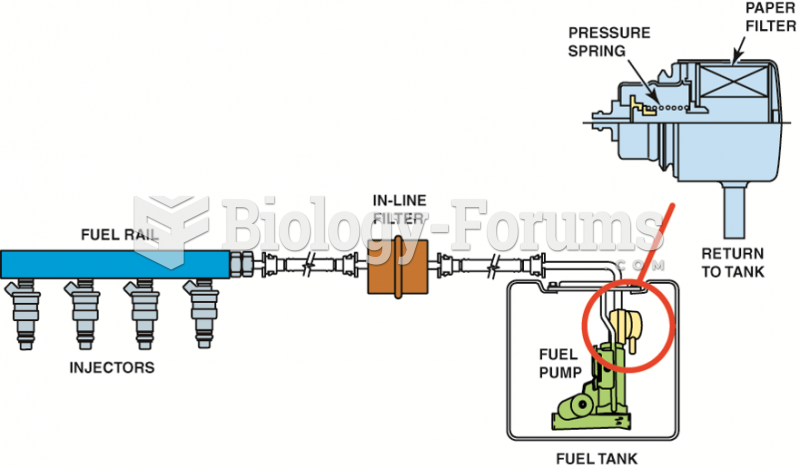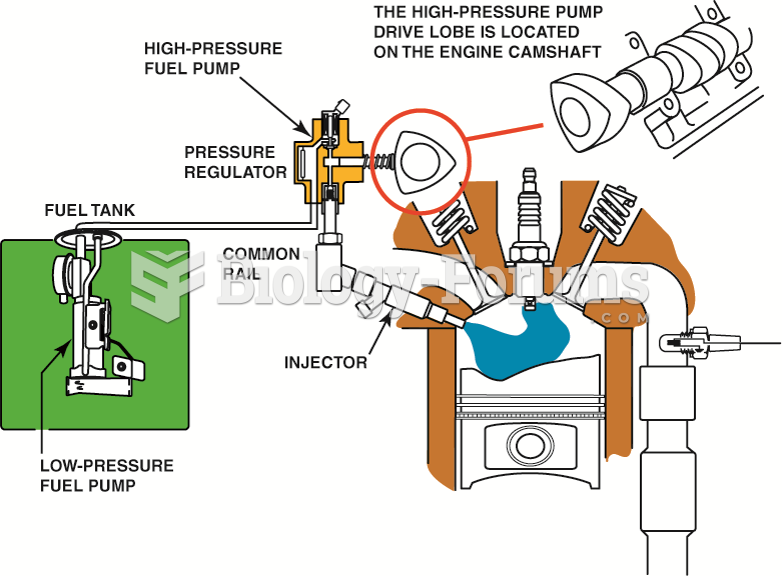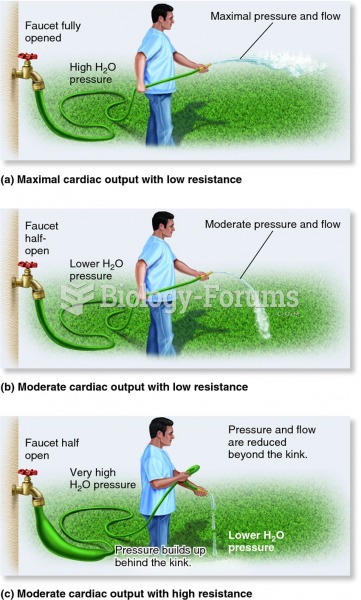|
|
|
Eat fiber! A diet high in fiber can help lower cholesterol levels by as much as 10%.
Thyroid conditions may make getting pregnant impossible.
Vampire bats have a natural anticoagulant in their saliva that permits continuous bleeding after they painlessly open a wound with their incisors. This capillary blood does not cause any significant blood loss to their victims.
Cutaneous mucormycosis is a rare fungal infection that has been fatal in at least 29% of cases, and in as many as 83% of cases, depending on the patient's health prior to infection. It has occurred often after natural disasters such as tornados, and early treatment is essential.
Individuals are never “cured” of addictions. Instead, they learn how to manage their disease to lead healthy, balanced lives.
 A demand delivery system uses a fuel-pressure regulator attached to the fuel pump assembly inside ...
A demand delivery system uses a fuel-pressure regulator attached to the fuel pump assembly inside ...
 A typical direct-injection system uses two pumps—one low-pressure electric pump in the fuel tank ...
A typical direct-injection system uses two pumps—one low-pressure electric pump in the fuel tank ...





